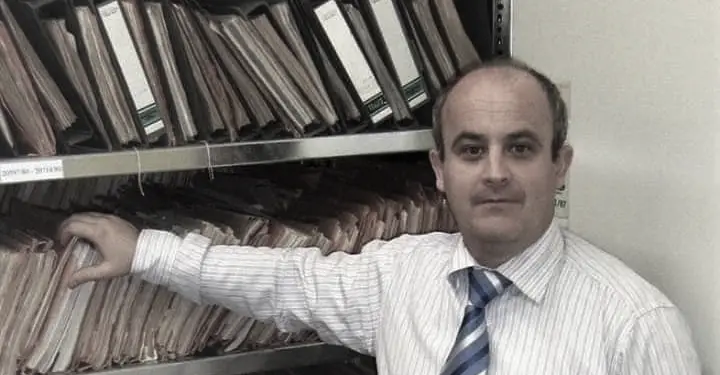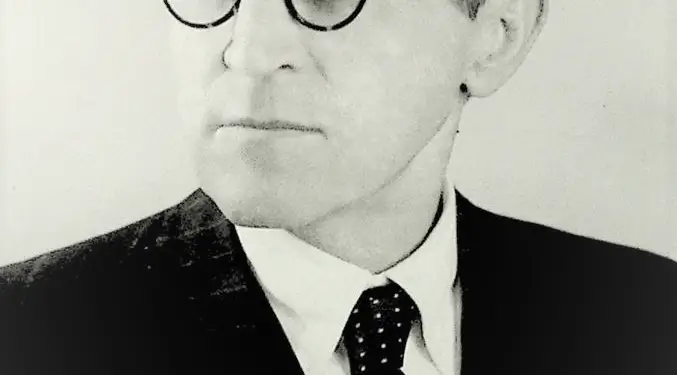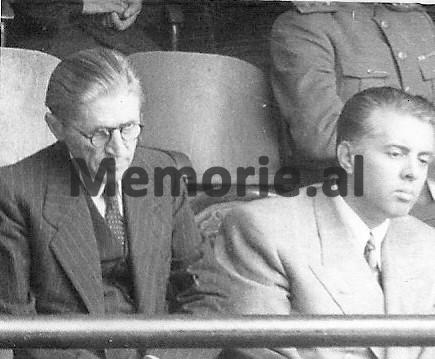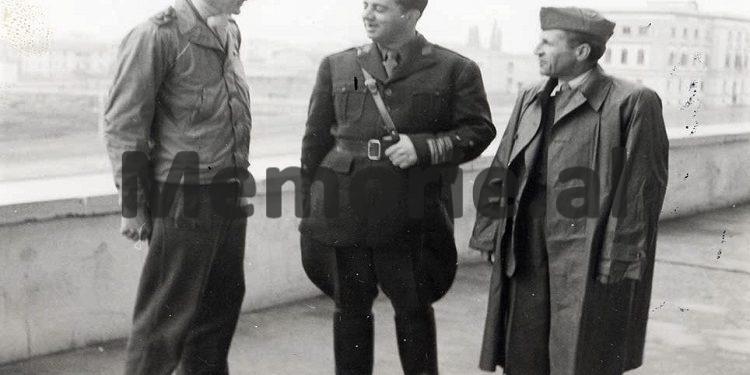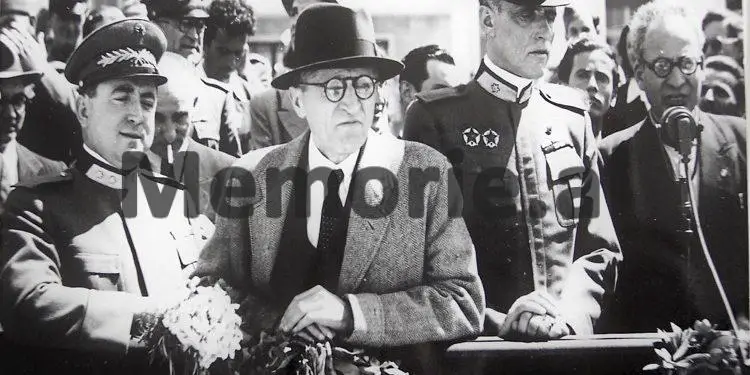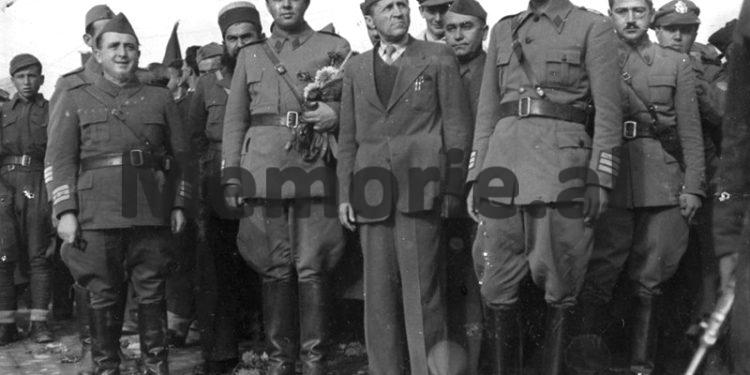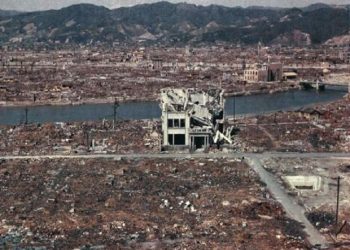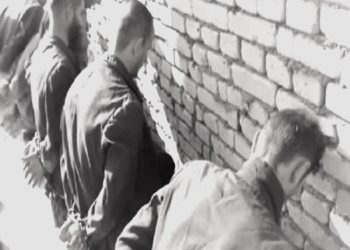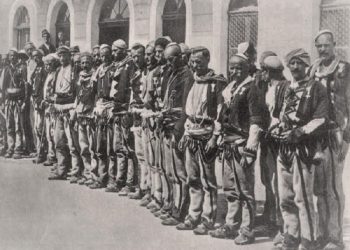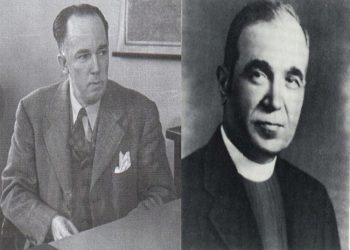By Kastriot Dervishi
– Who was the man who shot two bullets at Omer Nishan and why the autopsy report of the former President of the Republic was also signed by the Soviet doctor, Jofim Fodopojev Nikulceko…?! –
Memorie.al / In May 1954, the main newspapers of Tirana announced that: after a serious illness, the first President of communist Albania, Omer Nishani, had died. In those days, the elections for the People’s Assembly were held, at the end of which, Omer Nishani, would no longer even be a member of parliament! For a long time, or rather forever, Albanians would not know more than that. The truth is that the state itself at that time had kept the manner of Omer Nishan’s death “top secret”, which was actually a suicide recorded in the documents, as literal. For many years, the investigation file for this event would surprisingly be kept in the vault of the Minister of the Interior and then by another decision, it would be sent to where all the others were kept.
- Why?
- Wasn’t it because of the fact that the big truth exceeded even the data of the well-kept file that said he was a suicide?! Let’s look at the facts.
The blow to Omer Nishan!
Omer Nishani’s blow came after his brother, Besim (Beso) Nishani, was previously arrested on October 1, 1952, on charges of agitation and propaganda against popular power and not reporting his friend’s escape. 62-year-old Besim Nishani was taken as a defendant together with Bektash Haliti, being even accused of having wanted to escape to Yugoslavia. On February 19, 1953, the Territorial Military Court of Tirana presided over by Vasil Prifti, with members: Niko Barka and Kurtali Tahon, having a military prosecutor, Rako Caco, sentenced him to 4 months in prison, or 11 months of correctional work.
On April 3, 1953, the Military College of the Supreme Court, chaired by Mustafa Qilimi, based on the appeal of the defendant Bektash Alite (sentenced to 5 years in prison), made the final declaration of this decision. On May 29, 1953, the Military Court of Tirana chaired by Theofan Naçi, with members Nesti Zoton and Elham Zahajn, with prosecutor Thoma Nakon, considered the case, declaring Beso Nishan innocent and ordering his release from the courtroom trial, while the Prosecution had requested 2 years in prison for him. In the reasoning, the court itself stated that: ‚B. Nishan was not aware of his friend’s hostile conversations. In this way, the brother of the President of Albania stayed in prison for 8 months (A.M.B., F. H-GJ, D. 4893).
Until March 1, 1951, Beso Nishani had worked as an economist at the Ministry of Foreign Trade. It was clear that the arrest that happened to Beso was a threat to Omer Nishan. After all, he too could be arrested. Therefore, preliminary forms were required. In 1952, Enver Hoxha removed Nishan from the main podium of the People’s Assembly, placing him in a corner of the ministers’ table. After Stalin’s death, Enver Hoxha felt fear and began a major reformation of the government apparatus. In the framework of the general state reorganization, he forced Nishan to resign.
In order to further simplify the governance structure in the country, a joint meeting of the Political Bureau, the Presidium of the People’s Assembly and the Council of Ministers was held (on July 23, 1953), in which the new structure of the latter was approved. At this meeting, the resignation of president Omer Nishani and his replacement with Haxhi Lleshi was recommended.
On August 1, 1953, Omer Nishani submitted his written resignation to the People’s Assembly, in which he stated, among other things, that: for the rest of his life, he would remain loyal to the Soviet Union and communist ideals. But Nishan’s departure could not pass in silence. His friends started talking. Skender Luarasi, crossing the street, addresses Sami Baholli with the words: “Did you clean that tone?”, while Baholli replies that he was theirs and that he had resigned. (A.M.B., Fund – First Directory/ D. 3, V. 1953, D.10, sheet 28).
Omer Nishani was married to the Austrian citizen, Rozvita von Woler (1896 – 1971), with whom he divorced while he was the President of Albania. The Austrian woman, in order to preserve her dignity, agreed to live alone, but also learning how her ex-husband, whom she used to meet once a month, left this world. How Omer Nishani killed and what were the reasons for this murder?!
Murder in May!
It was May 26, 1954. Two days later, the elections for the People’s Assembly were held. Omer Nishani, who was not a candidate in these elections, was found murdered in the villa where he lived (today, Villa “Padam”, in front of INIMA). On May 27, 1954, the daily newspapers, “Zeri i Populli” and “Bashkimi”, very briefly announced the death of Omer Nishan at the age of 67, emphasizing: “after a serious illness”!
Even the funeral ceremony was announced simply. It was attended by Deputy Prime Minister Hysni Kapo, Minister of Trade and Communications Gogo Nushi, Vice Presidents of the Presidium of the People’s Assembly – Myslim Peza and Aleksandër Xhuvani, Minister of Foreign Affairs – Behar Shtylla, Vice President of the Democratic Front – Medar Shtylla, etc. Sami Baholli spoke on the occasion (“Zeri i Populli”, May 28, 1954).
The role of the first president of communist Albania was no longer necessary. Things could be said plainly and without any need for polish. For years, Nishan’s name would be in the middle level, close to silence. Only on October 13, 1989, the Gjirokastra hospital would be named after him.
The investigative file
In October 2007, in the capacity of the holder of the Archive of the Ministry of the Interior, I was browsing the inventory of the Fund of Operative Files, which contains files of pursued persons and collaborators of the Security. Among the names, my eye catches that of Omer Nishan. My suspicion that perhaps Nishani had been followed or a “collaborator” (which I did not believe), was answered by reading the single jacket, with the name Omer Nishani. There was the whole mystery about this murder. This material was hidden from ordinary reading for archivists or Security officials, finding shelter in the vault of the Minister of Internal Affairs.
After they were kept for many years in the vault, on February 18, 1980, Feçor Shehu ordered Xhule Çiraku to keep them. On September 3, 1982, Raqi Iftica sent this material to Hekuran Isai, who, after reading it, noted that: it was not necessary to preserve it, but to keep it like other documents. In this way, only at this time the material has gone to microfilm, also going to the jackets.
According to this file, on May 27, 1954, the State Security Investigation Branch, headed by lieutenant colonel Nevzat Haznedar (in charge of this case), drew up the report on the death of Omer Nishan. From the very beginning, the words stand out: “Dr. Omer Nishani, at 11:00 p.m., on May 25, 1954, killed himself with two gunshots.” Regardless of this, from the beginning, the investigators noted that: it was “suicide”, and for this reason, the relevant report was drawn up. The wounds that had caused Nishan’s death were close to his heart. The weapon found was of the German type, no. 194523, with 7.65 calibers, was owned by Omer Nishan.
The body was shot at a distance of 1 cm. The deceased was suffering from the disease of “cirrhosis atrophy hepatitis”. In the reasoning of 6 points, it was concluded that: Nishan had killed himself. First, the scene was examined, secondly, a forensic examination was done, thirdly, the weapon belonged to the murdered person, fourthly, a ballistics examination was done on the weapon, which turned out to be in good condition, fifthly, they were witnesses were interrogated, the most important of which was Dhimitër Evangjeli, and sixthly, in the apartment of the murdered man, an epigram was found, according to which it was proven that he had killed himself.
The General Prosecutor of the Republic, Siri Çarçani, on May 26, 1954, drafted the report on the event that happened the day before at 11.30. The nurse of the murdered man, Ariste Bratja, with the maid S. Pilku, after hearing two shots, found Omer Nishan on the upper floor, turned on his side, drowned in a pool of blood, with his gun nearby. Doctor Petro Cani was notified, who arrived and found the injured alive.
The incident took place in room no. 4 on the third floor, starting from the right. On the other side of the wall, there is a letter with an envelope. The dead man was lying on his back. The position of the corpse had been moved by the doctors after the death. Two shell casings were found, one of which was on the bed. Also, a hole in the wall from a bullet that had gone there was found. The minutes were signed by Siri Çarçani, criminal expert Shefik Boxhi, witnesses Muamer Spahiu and Athina Trashi.
Forensic supervision report
On May 25, 1954, at midnight, doctors Petro Cani and Aleks Bozo drafted the report on the forensic examination. They found the body lying on its back with its mouth open. Clothes soaked in blood. Likewise, the mattress. The pulse was absent. The distance of the wounds was 2 cm. One below the chest and the other further away. They bled non-stop. On the left shoulder, there are two wounds with a distance of 1.5 cm. Blood flows here too. There are 3 reasons for death: 2 wounds, the weapon were discharged in contact with the body, the deceased suffered from “chronic ascites”.
Autopsy
On May 26 at 10:45 a.m., at the Department of Normal Anatomy of the Higher Medical Institute, the autopsy of O. Nishan’s corpse was performed by Doctors Jofim Fodopojev Nikulçeko, Petro Cani, Ferdinad Paparisto and protocol holder Spase Trimçev. The two wounds were 1.1 centimeters apart. The stomach was maximally filled with food. The wounds had an anterior-posterior direction. Death was caused by massive hemorrhage and ‘pleuropulmonary shock’.
WITNESS
Captain Maqo Pecani asks Mehmet Grori, born in 1880, the gardener of the house, for 2 years. At 21.00, nurse Asime and cook Fera Lotja arrived and asked them to go to the third floor, after they heard a noise there. The door was two fingers open, with lights on. They had found him lying. The two women went to the clinic, while the bahçevan was left alone with her for a moment. Nishani moaned, saying: “Get out, you dog, where you got yourself into”. Bahçevani put the gun on the head of the dresser. Nishani asked the bahchevan to only hold him by the hands and not in another place. The doctor arrived (together with the nurse), who asked him to leave the room below. The doctor gave him a needle. After a few moments, Nishani is dead…!
Suspicion of murder
The fact that the cracks have been with a time interval, shows that we are dealing with a murder. The possibility of the injured person committing a second crime is almost zero. It was when the two women were on the second floor that they heard the second cry. After that, they got scared and went to the gardener, Meti, to ask for his help. The bedside table light was on. He had turned on the light and noticed. The doctor was moaning, but he said that: he did it because of the pain. After they had gone to the clinic, there the guard nurse, Athina Tashi, called Lieutenant Hilmi Dumes, and they all drove to the villa together.
After 10 minutes, Nishan was dead. Among the friends who visited Nishan, he mentioned Sami Baholli, Medar Shtylla, Dr. Osmani (Jonuzaj) with his daughter, Dr. Theodhosi, Dr. Zyma, brother, wife, etc. He always complained about the pain that the disease gave him. On May 26, asked Dr. Osman Jonuzaj. He had been a school friend with Nishan. Among other things, he reports: “When I went to Dr. Nishani again, after 2 weeks, he told me that he had called Dr. Hoxha and the Soviet doctor, who had confirmed the black liver disease.”
On May 26, 1954, he was questioned by investigator Stavri Xhara, who interrogated Dr. Fejzi Hoxha. This one had been dealing with Nishan since the beginning of 1954. According to the doctor, Nishani had two diseases that were incurable. The Soviet professor Petro Cani and he were involved in the treatment. His stomach was swollen and painful. Janko Theodhosi was asked after him. When he had gone to meet him, he had met Remzi Baçen and one of Leskovik. He mentioned Dr. Nishani’s TB. That same night, at 03:00, the same investigator interrogated the witness Lote Pilku. This had been a real drama. She was German married to Njazi Pilku. The 48-year-old was already a widow, as her husband had been shot by the communists as a saboteur. Lota had 2 sons, Oedipus 23 years old and Luani 15 years old.
She had never worked, except for the time she worked at Nishan. She met her future husband in 1922, when he was a student in Germany. This love lasted 4-5 years and then Njaziu returned to Albania. After a year, Njaziu comes to Germany, asks for the girl’s hand, they get engaged, and the wedding takes place in Bari. Jazou worked in the Ministry of World Affairs. In October 1947, Lota was introduced to Trëndafile (Rozvita) Nishani, to whom President Omer Nishani had asked for her husband’s forgiveness. Then he decided to start cleaning there. In 1949, the two cooks of Nishan, (Hungarian and Italian), left for their countries and for this reason, Lota had also performed the work of the cook.
According to her, when he fell into bed, Omer was quite tired. She heard the first noise and remembered that Nishani did not fall. After a while, I heard the second cry. After they went together with the gardener, the events continued, as shown above by the other witness. During the time they had been with him, Nishani, had not spoken a word. Captain Hilmiu gave him a needle, but when they took off his clothes and put cotton on the wound, Nishani died. Answering other questions, the witness said that: on Sunday morning, Dr. Osmani. Later came his cousin Nexhet Nishani, Hasan Pula, Ishan Leskoviku, etc.
On May 24, 1954, Nishan’s wife had arrived. He had stayed with her for a while. On May 25, no one had come. Then the investigator asks him what conversations Nishani had recently. The answer was that: lately he was very upset, saying that he does not shave like that. He was weak and his stomach was bloated. 7-8 months ago, Kostë Boshnjaku had come home to visit. He had also visited Dr. Ymer Dishnica, Shemsi Totozani, Koço Tashko, etc. Dhimitër Evangjeli had become a friend of Nishan since the Labinot Conference in September 1943. Nishan was in a bad condition; his illness had put him down. The doctors constantly pumped water out of his stomach. According to him, Enveri, Mehmeti and the Bureau’s friends constantly showed care for him.
The ex-wife of Omer Nishan, (the Austrian Rozvita), upset with the Albanians because of her ex-husband, stayed away from him, in a house on the street of ‘Pisha’. Her friend was the other Austrian, the wife of Kostë Boshnjak. One day the gardener comes home and wants to tell Rozvita something special. This she refuses and urges her to speak in the presence of her friend, as they were not, “like your race”. Believing in keeping his word, the landscape gardener has shown what he saw, Omer Nishani, was killed by the eldest son of one of the Vice Presidents of the Presidium of the People’s Assembly (the uneducated one), certainly not for personal reasons, but for the implementation of party duty. Rozvita left Albania, while Kostë Boshnjak’s wife, after keeping the secret for many years and when she was sure that the landscape gardener had been dead for years, told the story, so that this story would not remain unexplained. What was the motive of this murder? Of course, Nishani did not endanger Enver Hoxha’s personal power in any way. But being a witness who knew many things, it was better to remain silent forever, before natural death came to him.
The political journey of Omer Nishan
Before joining the communists, Omer Nishani had returned to Albania, after a long emigration, conditioned by the fact that: he was in opposition to King Zog, so he was known as an antizogist. Upon arriving in Tirana, he was appointed a member of the State Council, under the fascist regime. But in the summer of 1943, Nishani found himself in the ranks of the “National Liberation Front” which was understood to be led by the Communist Party. Continuing from this time, Nishani replaces the chairman of the Front, Kamber Qafmolla, who never actually held that office. Nishani, in various representations, became the most important figure after Enver Hoxha. In the (communist) Congress of Përmet, in May 1944, Omer Nishani was elected Chairman of the National Liberation Anti-Fascist Council, in the function of an undeclared head of state.
At the same time, in the Anti-Fascist National Liberation Committee headed by Enver Hoxha and called the “Democratic Government”, in October 1944, Omer Nishani took the post of Minister of Foreign Affairs, a position he held until February 9, 1946. In the elections of December 2 1945, he was elected deputy of Gjirokastra. On January 12, 1946, after Albania was declared a Republic, Nishani was elected President of the Presidium of the People’s Assembly. He was again elected deputy of Gjirokastra in the People’s Assembly, resulting from the elections of May 28, 1950. In the function that he was, Nishan had to sign the death sentences for many of his fellow immigrants, on whom Enver Hoxha had predetermined the punishments. But Hoxha could no longer govern with the people who had come out of the War and who, after all, knew many of his secrets. Step by step he began to replace them. One of these replacements was Omer Nishani, for who even the appearance as a facade was no longer valid. Memorie.al




